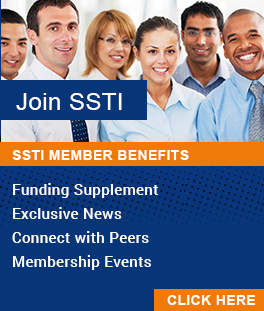Accelerators, Bubbles and Regional Innovation — Two Experts Weigh In
With more than 200 mentoring-intensive accelerators launching, convening, or closing down sometime in the past two years, it has become clear that announcing an accelerator's creation and sustaining one for multiple years are proving to be two very different matters. So it was a welcome change during a recent RIAN webinar to step away from the swagger-filled hyperbole of the bubble-watching blogosphere to hear well-grounded perspective and sage advice from two experts involved in the day-to-day operations of long-running and nationally recognized accelerators.
Is the accelerator model overplayed at this point as a regional economic development tool?
AlphaLab director Jim Jen and Betaspring chief of staff Melissa Withers have the years of collective entrepreneurial experience, impressive track records, and battle scars required to emerge as leaders in this rapidly evolving field. Based in Pittsburgh, Alphalab is one of the nation's oldest accelerators, founded in 2008. And Providence-based Betaspring, established in 2009 and already launching 57 startups, is no pup anymore in the increasingly crowded community of accelerators, many still hoping to make it to their second anniversary.
RIAN recently let webinar registrants listen in on a conversation among Jen, Withers and RIAN director Mark Skinner dealing with topics ranging from whether the accelerator space has become too crowded to advice for regions looking to start an accelerator to the history, structure, and organization of these two leading accelerators, and other questions from the online audience.
After discussing the similarities, differences and accomplishments of their own accelerators, Withers and Jen took on the growing concern for an oversaturation of the accelerator market.
I'm not sure I would say it's too crowded. I think what you're just seeing is a vast spectrum in quality, and output,
Withers said. I think it's fair to call it a bubble, but I think what you're seeing happening is a lot of shakeout in terms of quality. I'm not sure that it's quite as much of a dynamic as some bloggers might imply that it is.
Jen agreed, adding, Those who want to look for a bubble and that bubble bursting write about it. There will be examples [of failures] for them to find. I think, the way we look at it is, this is no different from what we tell the startups that go through our program. You've got to continually find what's your niche, and how are you going to stand out.
While answering questions from the audience, mentorship quality was one of the fundamental keys Jen and Withers advocated for building successful accelerators, particularly those from communities without a Silicon-Valley sized tech community.
I think all the mentors that we had in the beginning, and I would even say now to some degree, were mentors I had personally worked with in some capacity,
Jen explained.
Withers advised: I think it's better to start small. Start with a small network, as opposed to a large network. It's much easier to evaluate and nurture, and activate that network, early on, if it's not too big.
To further help regions considering accelerator support in their public-private innovation strategy, Jen stressed a need for focus: What type of companies do you want to help? What stage are you trying to help, and what's your goal? Then doing an assessment of what are the resources in your region. What's the strength of your region?
Withers concluded, I think if you want to build something that's really resilient, then it needs to be entrepreneur-led. Having seen the inevitable effect that political ties and leadership changes have on the sustainability of programs, you need to find ways to invest in an authentic entrepreneur-led community.
She added wistfully, If that were easy we'd all be doing it.
The complete webinar and slides are available for free airing at: http://cc.readytalk.com/play?id=fpebql


